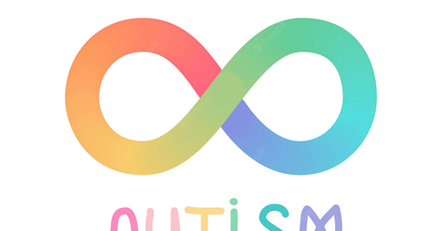Picture yourself sitting silently in a meeting or a busy café when out of nowhere, you feel a sharp, stabbing pain in the middle of your chest. Your heart beats quickly, your palms sweat, and it feels like the walls are closing in. It feels like you have tilted too far back in a chair, but instead of stopping, the feeling of falling continues. Even with your desperate efforts to stay grounded everything spirals out of hand. Your heart rate speeds up, your chest tightens, and every breath feels inadequate, shallow, and desperate. Your heart beats rapidly like it wants to break free from your chest, while your body trembles uncontrollably, drenched in sweat. Are you having a heart attack? Or could it be a panic attack?
Chest pain, heart palpitations, shortness of breath, light-headedness, nausea. Are indicative of either condition. Doctors and psychologists agree – you shouldn’t take a chance on it not being a heart attack.
How Common Are Panic Attacks?
Panic attacks are more common than you might think, affecting millions of people across various walks of life. Approximately 5 percent of Australians go through panic disorder at some point in their lives, while around 3-4 percent experience it within a 12-month period. They have the ability to attack in seemingly normal circumstances, like a pleasant day at the office, a social event, or even when unwinding at home. The signs may feel overpowering, causing individuals to feel helpless and exhausted.
In this blog, we will explore the experience of a panic attack, what triggers that can set them off, and how they can affect daily life.
What is a Panic Attack?
A sudden, temporary feeling of fear and intense bodily reactions in response to normal, non-threatening situations is termed as a panic attack. During a panic attack, you might experience excessive sweating, shortness of breath, and a sensation of heightened heart rate. It might seem as though you are experiencing a cardiac arrest. The symptoms of a cardiac arrest and panic attack are so similar that it sometimes can be hard to differentiate. If ever in doubt, ALWAYS err on the side of caution and go to hospital to be quickly evaluated to investigate either way.
Even after a thorough medical evaluation and receiving a clean bill of health from your doctor, you may still feel like something isn’t quite right physically. The truth is, it’s not just in your head—it’s your body’s natural survival mechanism at play, commonly known as the “fight or flight” response.
A great analogy I once read compares this feeling to an alarm system going off. During a panic attack, though, it’s as if the alarm is reacting to burnt toast rather than a house fire. The response is intense but out of proportion to the actual threat.
Panic attacks typically come on suddenly, often peaking within 10 minutes. They can be triggered by traumatic events or major life stress, but sometimes, they happen without any clear cause at all. It’s disorienting because your brain struggles to make sense of what’s happening – “messes with your head”, leaving you feeling shaken.
While panic attacks and heart attacks share some similar symptoms, they result from very different underlying causes. Panic attacks are triggered by stress hormones that activate the body’s “fight or flight” response, often causing a racing heart, chest pain, and shortness of breath.
In contrast, a heart attack occurs when a blockage in a coronary artery limits blood flow to the heart, producing the same symptoms. One key difference between the two is that heart attacks often happen during physical exertion—like digging, shovelling, or climbing stairs—especially in people unaccustomed to physical activity. Panic attacks, on the other hand, can occur even at rest, without any physical strain.
Duration is another distinction. Panic attacks usually peak and subside on their own within about 20 minutes, while a heart attack tends to persist and may worsen over time without medical intervention.
The main characteristic of panic disorder is experiencing panic attacks. However, they may occur in conjunction with other disorders, including:
- Anxiety Disorders
- Post-Traumatic Stress Disorder (PTSD)
- Phobias
- Mood Disorder, such as depressive disorder
- Disorders related to the use of substances
- Psychotic disorders
Although panic attacks do not pose a direct threat to your health, having them regularly can result in a decline in your overall quality of life and other complications.
Symptoms of Panic Attacks
Signs of panic attacks may include difficulty breathing, heart palpitations, trembling, overwhelming fear, and a feeling of suffocation.
Panic attacks occur suddenly and symptoms usually peak around 10 minutes after it starts and then quickly fade away. Some of the physical indications of a panic attacks are:
- Difficulty breathing, like hyperventilating
- Heart beating rapidly
- Chest pain (Pain that gets better over time)
- Shaking or trembling
- Nausea or dizziness
- Perspiring
- Chills
- Sensation of tingling or numbness in your fingers or toes.
- Sudden onset or onset during extreme stress or anxiety
- Symptoms that resolve within 20 to 30 minutes
You may also experience:
- Feeling like you can’t breathe or suffocated
- Anxious about losing control
- Feeling like you’re going to die.
- Depersonalization – feeling detached from oneself
- Derealization – experiencing a sense of unreality
Whereas Heart Attack Symptoms manifest as:
- Squeezing pain and pressure in the chest
- Sudden onset during or following physical activity (i.e., climbing the stairs or digging a hole etc)
- Pain that radiates to the arm, jaw or shoulder blades
- Pain and symptoms that get worse over time
- Shortness of breath
- Near fainting
- Sweating
- Nausea and vomiting

Experiencing panic attacks is extremely unpleasant and can be incredibly scary. If you’ve experienced signs of a panic attack, it’s essential that you seek professional medical attention. They are able to provide you with a formal diagnosis and confirm that there is no underlying physical issue like a heart attack.
What’s the Difference Between Panic Attacks vs. Anxiety Attack?
While panic attacks and anxiety attacks are often used interchangeably, they are different experiences.
Panic Attacks can happen suddenly without any obvious trigger. The symptoms may appear abruptly and intense, often mirroring those of a potentially life threatening illness. Panic episodes typically arise suddenly and dissipate quickly, often lasting under 20 minutes.
Anxiety Attacks usually occur in reaction to a specific stressor or situation. Symptoms usually develop slowly, being less severe but persisting for a longer period of time. Anxiety attacks are commonly linked with a general sense of unease or fear instead of the intense fear typically seen in panic attacks.
When Does it Become a Panic Disorder?
Anxiety vs. Panic Disorder: Key Differences
- Frequency and Intensity: Anxiety is generally ongoing, a constant worry or fear about everyday situations. Panic disorder, on the other hand, involves sudden and repeated panic attacks—intense periods of fear or discomfort that peak within minutes. These attacks often come without warning and can feel overwhelming.
- Physical Symptoms: Anxiety can cause physical symptoms like muscle tension, restlessness, or an upset stomach. Panic attacks, however, bring on more severe physical reactions like chest pain, heart palpitations, shortness of breath, dizziness, or even a sense of impending doom. These symptoms often mimic those of a heart attack, making panic attacks particularly frightening.
- Duration and Recovery: Anxiety can be ongoing and last for long periods, while panic attacks are usually short-lived, lasting about 10-20 minutes. But for those with panic disorder, the fear of having another attack can linger, leading to avoidance behaviours and heightened anxiety between attacks.
- Fear of Panic Attacks: One of the defining features of panic disorder is the ongoing worry about having more panic attacks. This fear can become so consuming that it begins to affect a person’s ability to function, leading them to avoid places or situations where they think an attack might occur.
- Impact on Daily Life: Panic disorder can significantly impact daily activities. The fear of having a panic attack can lead to avoiding social interactions, work, or even leaving home (in extreme cases, this can lead to agoraphobia). When anxiety begins to control your actions and choices, it may indicate a more severe condition like panic disorder.
How Can I Help When Someone is Experiencing Panic Attacks?
If you know someone who is experiencing a panic attack, here are some ways you can do:
- Say with them and remain composed
- Ask them what they need
- Assist them in directing their attention on the present
- Talk to them in simple and short sentences
- Encourage them to take slow and deep breathing by counting to five during each inhale and exhale.
- Give them reassurance they are out of harm’s way and that the panic attack is temporary.
How Can a Panic Attack Be Managed?
Therapy, medication, or a combination of the two can help in managing panic attacks and panic disorder. The duration of the treatment will vary based on how well your response to the treatment or the severity of the condition.
Psychotherapy, also known as talk therapy, encompasses a range of methods designed to assist individuals in recognising and modifying negative emotions, thoughts, and behaviours.
Different forms of therapy like cognitive behavioural therapy can be beneficial for managing panic attacks and panic disorder.
Exposure therapy is a highly effective treatment for panic disorder, particularly a method known as interoceptive exposure. In this approach, a mental health professional helps individuals confront the physical sensations associated with anxiety in a controlled setting, gradually reducing their fear of these sensations.
For example, someone who becomes anxious due to a rapid heartbeat may be asked to jog in place to elevate their heart rate. Over time, as they realise the increased heartbeat is not dangerous, their fear of it diminishes.
Panic disorder is very misunderstood but a very treatable condition. Exposure therapy is an empowering treatment, allowing people to regain control over their anxiety.
Medication – Some medication that may be used to help manage panic attacks and panic disorder. Antidepressants have the ability to reduce the frequency or intensity of panic attacks. Certain frequently recommended choices comprise serotonin-selective reuptake inhibitors (SSRIs) and serotonin-norepinephrine reuptake inhibitors (SNRIs).
Medications for anxiety, known as anti-anxiety medications, are commonly recommended to control feelings of anxiety and stop panic attacks.
A Message from New Directions Psychology
A heart attack is a medical emergency—panic attacks are not. However, with the overlap in symptoms, it can be difficult to tell the difference. Don’t take any chances. If you experience chest pain or other symptoms that could indicate a heart attack, or if you’re unsure whether it’s a heart attack or a panic attack, seek immediate medical care.
While panic attacks don’t pose physical harm, they can be overwhelming and interfere with daily life, affecting your mental well-being and keeping you from activities you enjoy. Don’t hesitate to talk to your healthcare provider about your experiences. They can help you address the underlying fears and anxieties and recommend treatments like therapy or medication to manage the episodes.
At New Directions Psychology, we’re here to provide guidance and support to help you reduce and manage panic attacks. Help is available, and taking that first step can make all the difference in improving your quality of life. 🙂














